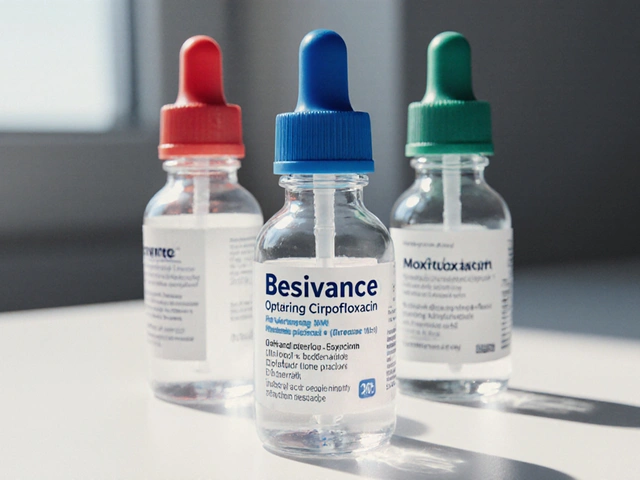You want to know if combining cefprozil with another antibiotic will improve outcomes-or just add cost, side effects, and resistance pressure. The short answer: it helps in a few specific situations, but many pairings add little and can even hurt. You’ll see exactly when cefprozil pulls its weight in a two-drug plan, how to choose the right partner, and the traps that trip up even experienced prescribers.
What cefprozil brings to the table-and where it falls short (with a quick TL;DR)
TL;DR
- Use cefprozil combination therapy when you need to cover atypicals or anaerobes that cefprozil can’t touch, or when MRSA risk is high in skin infections.
- Avoid duplication. Don’t pair cefprozil with another beta-lactam that hits the same bugs without adding value.
- Think step-down. Combinations make more sense early (pending cultures) or as a short bridge; de-escalate once you know the bug.
- Watch for C. difficile risk, drug interactions, and allergy history. Renal dosing matters.
- Follow current guidelines (IDSA/ATS for pneumonia, AAP for otitis media, Australian Therapeutic Guidelines) and your local antibiogram.
First, a quick profile. Cefprozil is an oral second‑generation cephalosporin. It works by time‑dependent killing-so steady blood levels above the bug’s MIC are key. Typical adult dosing is 500 mg every 12 hours; in kids, weight-based dosing is used. It’s cleared renally, so reduce the dose if creatinine clearance is under ~30 mL/min. Probenecid can bump levels, though we rarely use that on purpose in primary care.
Coverage strengths:
- Streptococcus pyogenes and many Streptococcus pneumoniae (local resistance varies).
- Haemophilus influenzae and Moraxella catarrhalis (including some beta‑lactamase producers).
- Uncomplicated skin and soft tissue infections due to streptococci and MSSA (variable).
Notable gaps:
- No atypicals (Mycoplasma, Chlamydia pneumoniae, Legionella).
- No MRSA, no Enterococcus, no Pseudomonas, no ESBL coverage.
- Weak anaerobe cover-don’t count on it for oral anaerobes or deep neck space infections.
Where does combination therapy even make sense with cefprozil?
- Community-acquired pneumonia (CAP) when you want a beta‑lactam base plus atypical coverage. Many guidelines list amoxicillin/clavulanate or cefuroxime/cefpodoxime as the beta‑lactam of choice with a macrolide or doxycycline. Cefprozil is a reasonable alternative if local pneumococcal susceptibility supports it.
- Dental or sinus infections when anaerobes are likely and amoxicillin/clavulanate isn’t tolerated. Pair cefprozil with metronidazole short term and reassess.
- Cellulitis with MRSA risk. Add doxycycline or TMP‑SMX for MRSA while cefprozil covers streptococci.
Evidence signals worth knowing:
- CAP: IDSA/ATS guidance (2019, reaffirmed updates through 2024) supports beta‑lactam plus macrolide/doxy for moderate disease. Oral beta‑lactams commonly cited include amoxicillin/clavulanate, cefuroxime, cefpodoxime; cefprozil offers a similar profile but is less commonly listed.
- Acute bacterial sinusitis: IDSA (2012, practice continues) and Australian Therapeutic Guidelines prefer amoxicillin/clavulanate first-line. Second‑gen oral cephalosporins are second‑line options; pair with metronidazole if anaerobes matter.
- Otitis media: AAP (2013 update, consistent in later summaries) prioritises amoxicillin, then amox/clav; oral cephalosporins are alternatives for penicillin allergy (non-anaphylaxis). Combinations are rarely needed unless complications.
Bottom line for this section: cefprozil is a decent beta‑lactam base for upper respiratory and mild skin infections. To justify a combo, you need a gap to fill (atypicals, anaerobes, or MRSA) or a severity signal that warrants broader early coverage with a plan to narrow fast.

How to design a cefprozil combo that works (and skip the ones that don’t)
Here’s a simple way to build a safe, effective regimen in five steps:
- Define the target: site of infection and likely organisms (use your local antibiogram).
- Map cefprozil’s coverage to that target-note what it misses.
- Pick one partner that fills the biggest gap (atypicals, anaerobes, or MRSA)-not two, not three.
- Check dosing, renal function, allergies, and interactions.
- Set a stop point: reassess at 48-72 hours; de‑escalate to the narrowest single agent when you can.
Good pairings you’ll actually use:
- CAP, outpatient, moderate risk: cefprozil + azithromycin or doxycycline. This adds atypical coverage. Make sure your local S. pneumoniae is reasonably susceptible to your chosen beta‑lactam.
- Odontogenic infection or sinusitis with anaerobic concern and amox/clav intolerance: cefprozil + metronidazole. Short course, close follow‑up.
- Nonpurulent cellulitis with MRSA risk (e.g., prior MRSA, penetrating trauma, contact sports): cefprozil + doxycycline or TMP‑SMX. Cefprozil covers strep; the partner covers MRSA. If purulent, consider MRSA‑focused therapy and reassess need for strep cover.
Pairings to avoid or doubt by default:
- Two beta‑lactams (e.g., cefprozil + amoxicillin/clavulanate): duplicates coverage and increases adverse effects without a clear gain.
- Cefprozil + a respiratory fluoroquinolone: too broad; high C. diff and adverse event risk; save fluoroquinolones for when you truly need them.
- Cefprozil + linezolid or vancomycin for routine outpatient skin infections: overkill unless culture‑directed or severe.
Practical dosing touchpoints (adults):
- Cefprozil: 500 mg every 12 hours; reduce dose if CrCl <~30 mL/min (check a dosing guide). Take with or without food.
- Azithromycin: 500 mg day 1, then 250 mg daily days 2-5 for CAP; watch QT prolongation risk.
- Doxycycline: 100 mg every 12 hours; avoid in pregnancy; photosensitivity is common.
- Metronidazole: 400-500 mg every 12 hours; avoid alcohol; metallic taste, nausea.
- TMP‑SMX (DS): one tablet every 12 hours; monitor for rash, hyperkalemia, and interactions (e.g., warfarin).
Common decision rules I use:
- Three-part test for a combo: Does it add missing coverage? Is the patient sick enough to justify it? Do I have a plan to stop it?
- Sinus and dental infections: if you need anaerobe cover but can’t use amox/clav, add metronidazole and keep it short.
- Skin infections: think of strep (beta‑lactam) plus MRSA (doxy or TMP‑SMX) when risk factors exist. If not, a single agent usually does fine.
- CAP: if atypicals are on your radar, add a macrolide or doxy; if not, a single beta‑lactam may be enough for low‑risk patients per guideline pathways.
Four quick case sketches
- 35‑year‑old with CAP, no comorbidities, dry cough, myalgias, exposure to sick contacts: cefprozil + doxycycline for 5 days. Reassess at 48-72 h; if improved, complete short course and no need to extend.
- 28‑year‑old with maxillary sinusitis, severe nausea on amox/clav last month: cefprozil + metronidazole for 5-7 days; saline irrigation; intranasal steroid. Stop metronidazole once facial pain and purulence settle.
- 22‑year‑old rugby player with purulent leg abscess after turf burn: incision and drainage first. If systemic signs or surrounding cellulitis, doxycycline for MRSA plus a short cefprozil course if streptococcal coverage is needed; reassess in 48 h.
- 6‑year‑old with AOM, non‑anaphylactic penicillin rash history: cefprozil monotherapy is often enough; combinations are rarely needed unless complications or treatment failure. Check paediatric dosing.
| Combo | Main target organisms | Typical setting | Guideline support | Watch‑outs |
|---|---|---|---|---|
| Cefprozil + azithromycin | S. pneumoniae + atypicals | Outpatient CAP | IDSA/ATS supports beta‑lactam + macrolide; cefprozil is an alternative beta‑lactam | Macrolide QT risk; local macrolide resistance can be high |
| Cefprozil + doxycycline | S. pneumoniae + atypicals; MRSA in skin | CAP; cellulitis with MRSA risk | Alternative to macrolide combos in CAP; common pragmatic pairing in skin | Photosensitivity; avoid in pregnancy |
| Cefprozil + metronidazole | Oral anaerobes + streptococci | Dental infections; sinusitis with anaerobic concern | Used when amox/clav not tolerated; short course | Alcohol interaction; metallic taste; neuropathy if prolonged |
| Cefprozil + TMP‑SMX | Streptococci + community MRSA | Skin/soft tissue with MRSA risk | Common in practice when MRSA risk is present | Hyperkalemia; rash; warfarin interaction |
| Cefprozil + another beta‑lactam | Duplicated gram‑positive/negative | Usually none | Not recommended | More side effects; no added benefit |
Notes on evidence and practice (2025): The core principles above align with IDSA/ATS pneumonia guidance, AAP otitis media guidance, and the Australian Therapeutic Guidelines: Antibiotic. Resistance patterns shift by region; here in Australia, local antibiograms and stewardship policies tighten the case for short courses and early de‑escalation. In many regions, macrolide resistance in pneumococcus is high enough that doxycycline is a more reliable atypical partner than a macrolide for some patients.

Risks, pitfalls, and your go‑to checklists (plus FAQ and next steps)
Adverse effects to keep front of mind:
- Gastrointestinal issues: diarrhoea, nausea; any antibiotic combo increases C. difficile risk. Warn patients about severe or bloody diarrhoea.
- Allergy: cross‑reactivity between penicillins and second‑generation cephalosporins is low (roughly 1-4% in true IgE‑mediated cases), but type I reactions call for specialist input.
- Drug interactions: macrolides (QT prolongation), TMP‑SMX (warfarin; hyperkalemia), metronidazole (alcohol; warfarin potentiation). Cefprozil itself has few major interactions.
- Renal impairment: reduce cefprozil dose if CrCl is low; TMP‑SMX also needs caution.
- Pregnancy & lactation: cephalosporins are generally considered safe; avoid doxycycline in pregnancy; discuss risks of TMP‑SMX around late pregnancy.
Five red flags that should change your plan:
- Systemically unwell (hypotension, hypoxia, altered mental state): consider hospital‑level care and IV therapy.
- Known ESBL or Pseudomonas risk: cefprozil won’t cover this-don’t combine your way out of that gap.
- Deep space infection suspected (neck, mediastinum, diabetic foot with systemic signs): needs imaging, surgical input, and broader IV therapy.
- Anaphylaxis history to beta‑lactams: pick a non‑beta‑lactam regimen and/or seek allergy advice.
- Failure to respond in 48-72 hours: stop, reassess, culture if possible, and pivot.
Quick checklist before you write a combo:
- Indication clear and bacterial? (Not viral.)
- Likely bugs listed and mapped to coverage gaps?
- Single best partner chosen to fill the gap?
- Allergies, renal function, pregnancy status checked?
- Interactions reviewed (warfarin, QT risks, alcohol with metronidazole)?
- Duration set (usually 3-5 days for CAP, 5-7 for sinus/skin) and review at 48-72 h?
- Plan to de‑escalate to monotherapy once stable or when cultures return?
Common pitfalls (and fixes):
- Throwing multiple drugs at a mild infection. Fix: narrow to one agent unless you can’t hit key targets with one drug.
- Ignoring atypicals in CAP. Fix: add doxycycline or a macrolide if patient factors or local patterns suggest atypicals.
- Assuming cefprozil covers anaerobes. Fix: it doesn’t reliably; add metronidazole if anaerobes matter and amox/clav isn’t an option.
- Not adjusting dose in renal impairment. Fix: check eGFR/CrCl and use a dosing guide.
- Continuing the combo after improvement. Fix: stop the partner early once you’re confident a single agent is enough.
Mini‑FAQ
- Does cefprozil cover atypicals? No. That’s why you pair it with doxycycline or a macrolide in CAP when needed.
- Is cefprozil better than amoxicillin in combos? Not generally. Amoxicillin/clavulanate is more versatile, especially for anaerobes. Cefprozil can be an alternative when amox/clav isn’t tolerated.
- Can I use cefprozil for UTIs in combination? It’s not a go‑to for UTIs, and combinations won’t fix resistance. Use UTI‑appropriate agents based on local resistance and cultures.
- What about penicillin allergy? Non‑anaphylactic reactions often tolerate cephalosporins. For true anaphylaxis, choose non‑beta‑lactam options and consider allergy referral.
- Alcohol with metronidazole? Avoid during therapy and for 48-72 hours after the last dose to prevent a disulfiram‑like reaction.
- How long should I treat? Keep it short when the patient improves: CAP 3-5 days, sinusitis 5-7, cellulitis 5-7, tailored to response and guidelines.
When to get help
- No improvement by 72 hours, or the patient is getting worse.
- Recurrent infections, recent hospitalisation, or recent broad‑spectrum antibiotics.
- Complicated anatomy (post‑surgical sinuses, diabetic foot, prosthetic material).
Next steps you can take today
- Check your local antibiogram for pneumococcal, H. influenzae, and MRSA patterns.
- Pick one default cefprozil combo per indication (e.g., CAP = cefprozil + doxy; sinus/dental with anaerobes = cefprozil + metronidazole; skin with MRSA risk = cefprozil + doxy/TMP‑SMX).
- Set automatic review points at 48-72 hours for every combo you start.
- Document a de‑escalation plan in your notes: what you’ll stop first and why.
- Educate patients: red flags, expected timeline, and when to call.
A note on sources: The principles here reflect IDSA/ATS CAP guidance (2019 with updates to practice through 2024), AAP otitis media guidance, the Australian Therapeutic Guidelines: Antibiotic (latest edition), and standard dosing references like the Sanford Guide (2025). Use them alongside your local resistance data.
Final thought: combinations are tools, not a default. If a second drug doesn’t add clear coverage or a safety margin you actually need, it’s just baggage. When you do pair cefprozil, keep it tight, targeted, and temporary.







Comments(16)